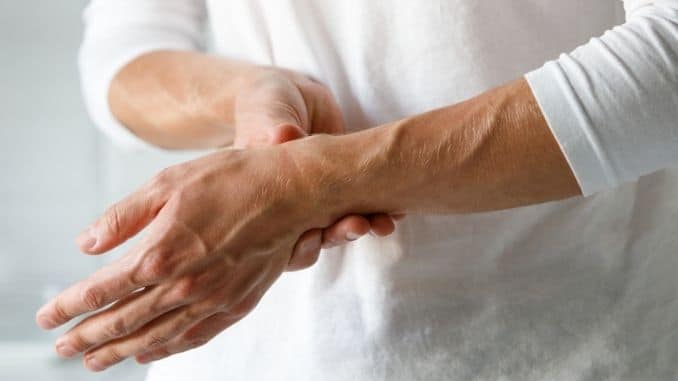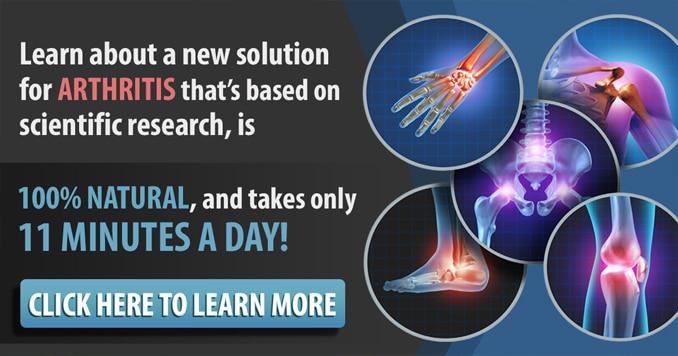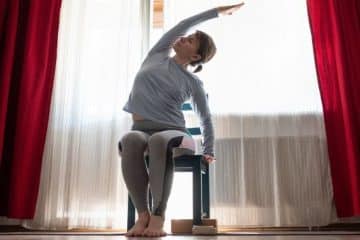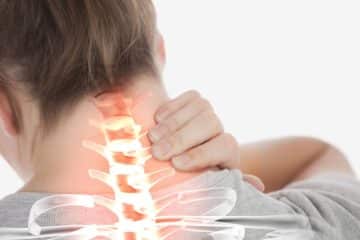ly Rheumatoid Arthritis (RA) is a long-term, progressive, and disabling autoimmune disease characterized by inflammation and pain in the joints. The most commonly affected joints are the hands, knees or ankles.
Rheumatoid Arthritis is also a systemic disease, which means it affects the whole body. It occurs when a person’s immune system mistakes the body’s healthy tissues for foreign invaders. As the immune system responds, inflammation occurs in the target tissue or organ.
For unknown reasons, more women than men get Rheumatoid Arthritis, and it usually develops in middle age. Having a family member with RA increases the odds of developing RA.
Symptoms:
The hallmark of RA is morning stiffness that lasts longer compared to osteoarthritis (OA). Other cardinal signs include:
- Pain, swelling, and stiffness in more than one joint
- Symmetrical joint involvement
- Joint deformity
Rheumatoid arthritis often leads to weakened muscles, which can worsen joint pain. Strength training helps decrease pain and increase muscle strength.
Because RA has no known cure, symptoms that are not effectively managed can lead to a number of physical deformities. These include:
1. Boutonniere deformity
The joint in the middle of the finger bends toward the palm, while the outer finger joint may bend in the opposite direction.
 2. Swan-neck deformity
2. Swan-neck deformity
The base of the finger and the outermost joint bend, while the middle joint straightens.
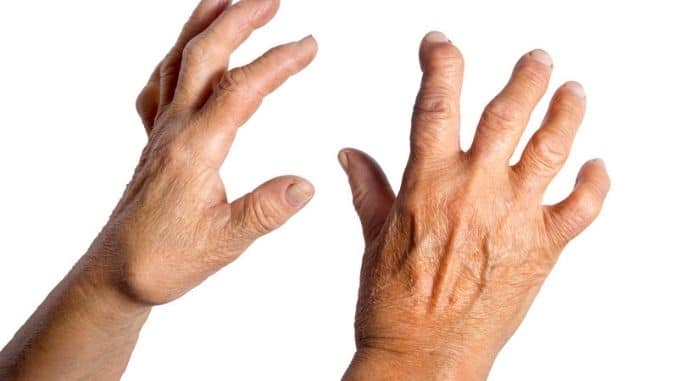 3. Hitchhiker’s thumb:
3. Hitchhiker’s thumb:
The thumb flexes at the metacarpophalangeal joint and hyperextends at the interphalangeal joint below your thumb nail. This is also called Z-shaped deformity of the thumb.
4. Claw toe deformity:
Basically, the toes are either bent upward from the joints at the ball of the foot, downward at the middle joints, or downward at the top toe joints and curl under the foot.
Suggested Exercises:
People with RA who exercise may find that they have less pain than those who do not. Exercise can reduce painful symptoms, improve joint function and flexibility, increase range of motion, and boost mood.
The following types of exercise may help relieve the pain, joint stiffness, and other symptoms that RA can cause:
1. Stretching
Stretching can help improve flexibility, reduce stiffness, and increase range of motion. Daily stretching, ideally in the morning, is important for relieving RA symptoms. The ideal stretching routine will be different for each person and will depend on which joints are affected and what symptoms occur. However, stretches often involve slowly and gently moving the joints of the knees, hands, and elbows.
a. Helpful Hints:
-
- Warm up by walking in place or pumping the arms for 3-5 minutes while sitting or standing.
- Hold each stretch for 10–20 seconds.
- Repeat each stretch 2–3 times.
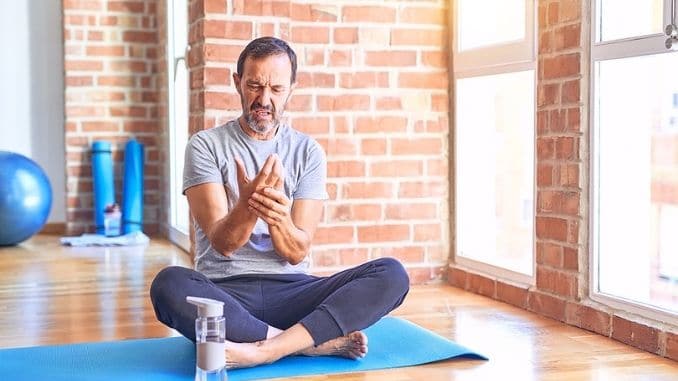 Safe and effective stretches include:
Safe and effective stretches include:
a. Hamstring stretch:
First, start in a standing position. Hinge from your hips to bend your upper body forward, lowering your head and arms down towards your toes. Keep a slight bend in your knees. Hold this position for 10-20 seconds.
b. Finger/wrist stretch:
Bend your fingers forward, then back to stretch the finger joints. Bend your hand forward and back to stretch your wrist muscles. Hold each stretch for 10–20 seconds.
c. Cross-body arm stretch:
Cross one arm in front of your body at shoulder-height and gently hold this position for 10-20 seconds. Repeat the movement on the opposite side. Next, reach upward the with one arm, tilting your arm slightly over your head to stretch your shoulder. Hold this position for 10-20 seconds and repeat the movement on the opposite side.
d. Neck stretch:
Drop your head forward gently, then roll your head slowly toward one shoulder and back to the opposite shoulder.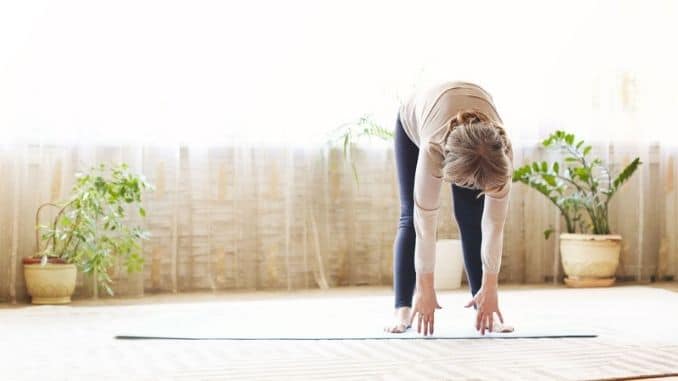
2. Walking
Walking is a low-impact exercise that can help with aerobic conditioning, heart and joint health, and improving mood. It is essential to wear proper shoes and stay hydrated, even if the walking is not strenuous. Start slowly and increase your pace when possible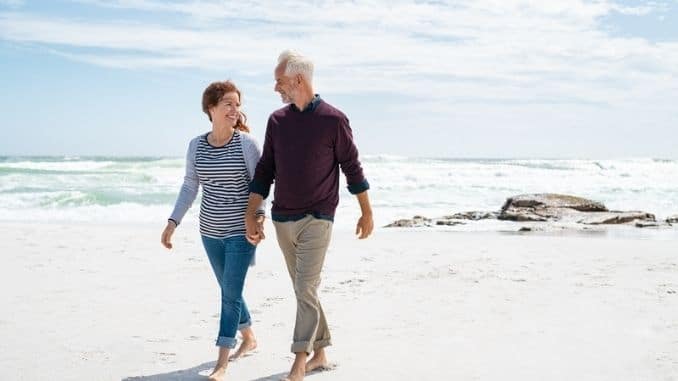
3. Strength Training
Strengthening the muscles around the affected joints can help increase strength while reducing pain and other RA symptoms. Basically,using resistance bands is one of the best ways to challenge the body and build muscle over time.
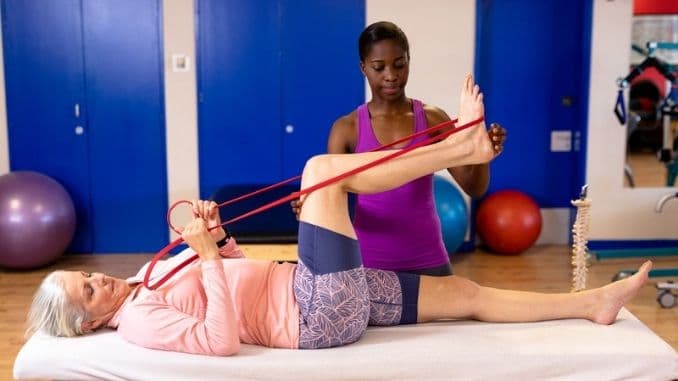 Some safe and effective strength-training exercises include:
Some safe and effective strength-training exercises include:
Palm press: This is an isometric exercise, so there will be little to no movement. Press your palms together and hold.
Bicep lifts: Sit in a chair with your arms resting on your thighs. Hold a light dumbbell in each hand with your palms facing upward. Bend your arms to bring your hands to shoulder-height. Lower your arms to return to the starting position.
Seated knee lift: Sit in a chair and wrap a resistance band around your legs, slightly above your knees. Next,slowly raise one leg, then lower your foot to the floor. Repeat the movement on the opposite side.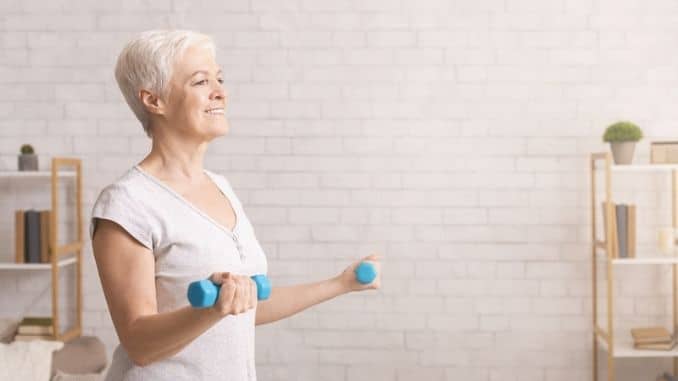
4. Cycling
Riding a bike is also an excellent, low-impact exercise that’s easier on the joints than other aerobic exercises. It helps maintain cardiovascular health, increases leg strength, and reduces morning stiffness. You can bike outside, or use a stationary bike at the gym or in your home.
5. Yoga
It combines postures with breathing and relaxation, also helps improve RA symptoms. Yoga or yoga stretching can help patients improve flexibility and range of motion.
Some helpful and effective yoga stretches include:
Cobra: Lie face-down on the floor, keeping your toes pointed away from you. Press your palms into the floor at shoulder-height and slowly raise your upper body. Keep your elbows close to your sides.
Seated spinal twist: Sit upright on a chair. Place your hand on the outside of your opposite thigh. Gently twist in the direction of your arm and hold this position. Repeat the movement on the opposite side.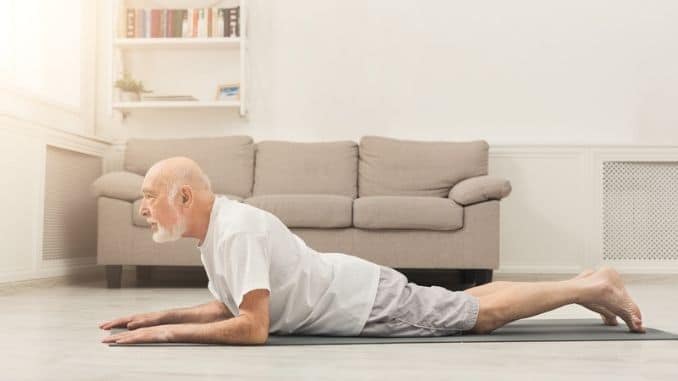
6. Water Exercises
Water-based exercises, like swimming and water aerobics, also improve the use of affected joints and decrease pain.
People with RA show greater improvements in health after participating in hydrotherapy (exercising in warm water) than with other activities. The primary benefits of hydrotherapy are decreased pain and joint tenderness. Hydrotherapy also improves mood and overall well-being.
Exercises to avoid?
There are no specific exercises that everyone with RA should avoid. Each person is different, and an activity that causes pain for one person may not have the same effect on another person. Basically,it is important to pay close attention to your body and consult with a doctor or physical therapist for guidance.
To sum up,it is important for people with RA to remain as physically active as possible. However, it is equally crucial to avoid discomfort or injuries. Choose the right pace and listen to your body. If exercise causes discomfort or a flare, it is best to reduce the session. Take time off to rest when necessary. Creating a daily routine of focused exercises can help.
Learn about a new solution for Arthritis below.
Unlock the key to managing arthritis with our comprehensive Arthritis Handbook! Say goodbye to discomfort and hello to relief. Let's take control of your journey towards a pain-free life together. Get your hands on the Arthritis Handbook today and start living your best, most comfortable life yet!

